Key takeaways:
- Understanding character motivations is crucial for creating deeper, relatable, and dynamic characters that resonate with readers.
- Motivations can be intrinsic or extrinsic, and exploring both types enhances character arcs and emotional engagement in storytelling.
- Techniques like dialogue, inner monologue, and contrasting actions reveal motivations effectively, enriching readers’ understanding of characters.
- Character growth often involves transformation through challenges, with motivations evolving in response to personal experiences and conflicts.
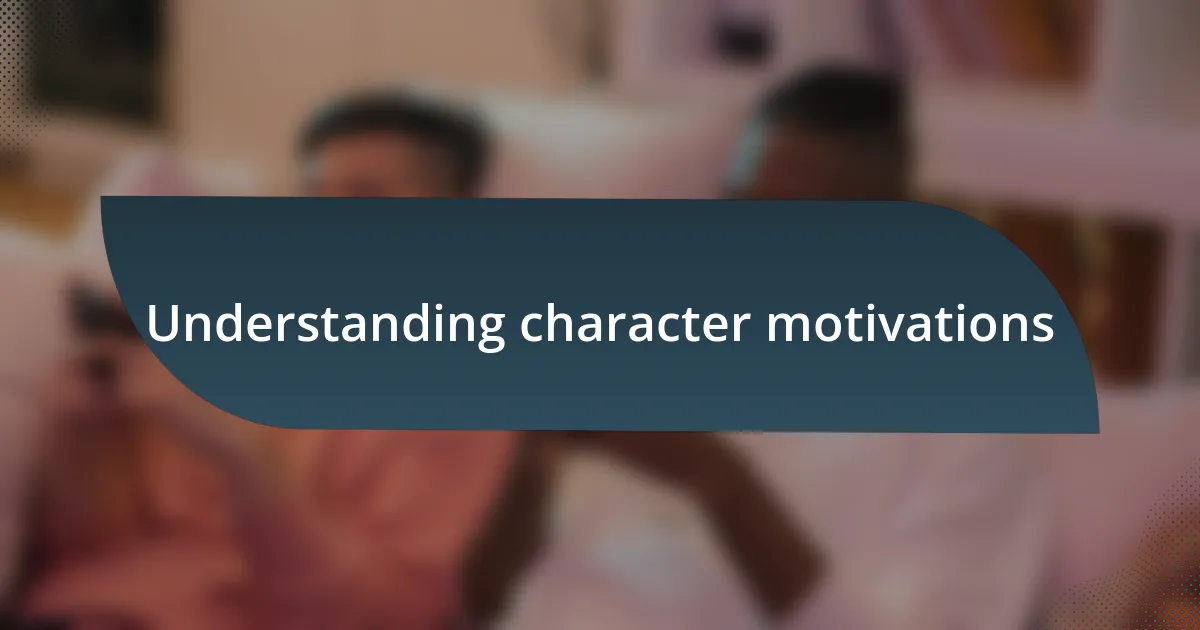
Understanding character motivations
Understanding character motivations goes beyond just surface-level desires; it’s about delving into what drives individuals to act the way they do. I often reflect on my favorite characters, like those in novels I’ve read, and ask myself, “What fear or longing pushes them to make those crucial choices?” It’s this introspection that leads to a richer connection with the narrative.
In my writing journey, I’ve noticed that when I truly grasp a character’s motivation, everything changes. I remember developing a character who struggled with feelings of inadequacy, and exploring that emotion allowed me to craft scenes filled with raw authenticity. It hit me that readers are not just interested in action; they crave to understand what inspires a character’s decisions, their flaws, and especially their growth.
Sometimes, I like to imagine what might have happened if a character had made different choices. For instance, if a hero chose to follow their heart instead of societal expectations, how would that affect their journey? These “what-if” scenarios reveal the depth of motivations, making both the characters and the story more compelling. Feeling this connection enriches my experience, enhancing my understanding of the intricate dance between motivation and action in storytelling.
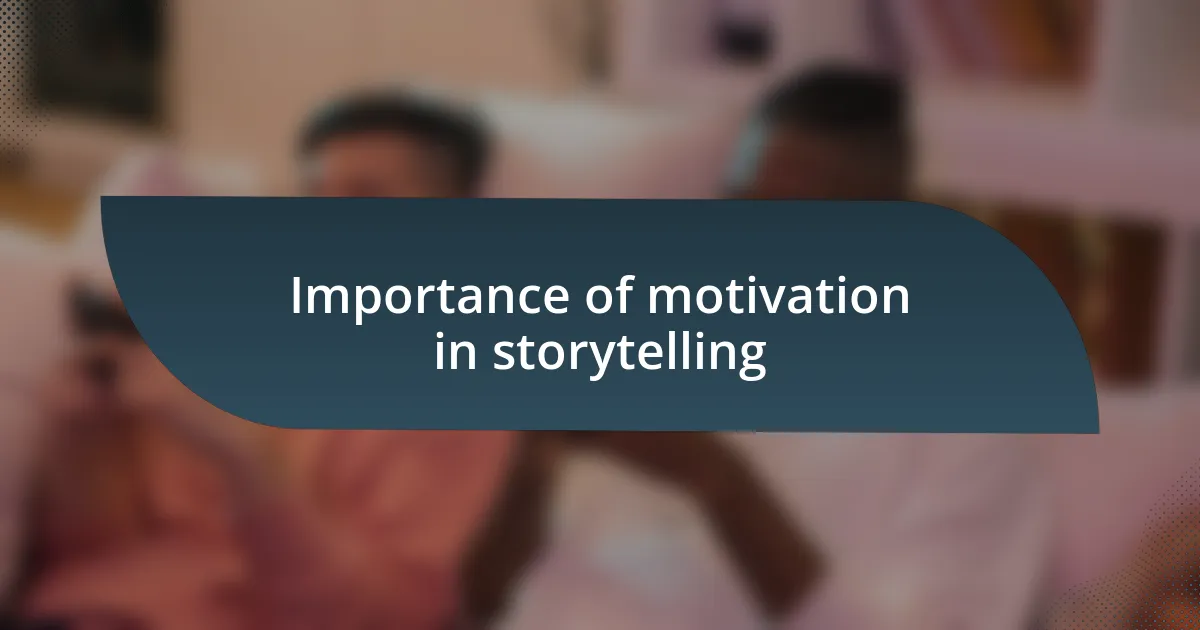
Importance of motivation in storytelling
Motivation in storytelling serves as the backbone of character development. When I look back at my own writing, I realize that characters become truly memorable when their motivations resonate with the audience. For example, I remember crafting a villain whose actions stemmed from a deep-seated need for acceptance, which ultimately made them more relatable, despite their destructive choices. This depth invites readers to empathize with characters, transforming simple narratives into profound journeys.
Think about it: motivations are what propel the plot forward. In my experience, when a character’s goal is well-defined, every action they take feels purposeful. I distinctly recall a story where a protagonist was driven by revenge. This singular motivation not only shaped their decisions but also created a palpable tension that kept readers on edge. Without such strong motivations, characters risk becoming mere archetypes, losing the richness that fully developed personas bring to a story.
Ultimately, motivation fuels conflict and drives character arcs. Reflecting on my writing process, I often ask myself what’s at stake for my characters. I recall a scene where a character had to choose between love and duty, and that moment of decision stirred intense emotions within me, as if I were living through their dilemma. This resonating moment showed me that when motivation is clear, every choice feels heavy with significance, and that’s when storytelling truly comes to life.
| Motivation Aspect | Impact on Storytelling |
|---|---|
| Character Development | Enriches personas, making them relatable and memorable. |
| Plot Progression | Drives action, creating a sense of purpose and urgency. |
| Conflict Creation | Generates tension and stakes, heightening emotional engagement. |
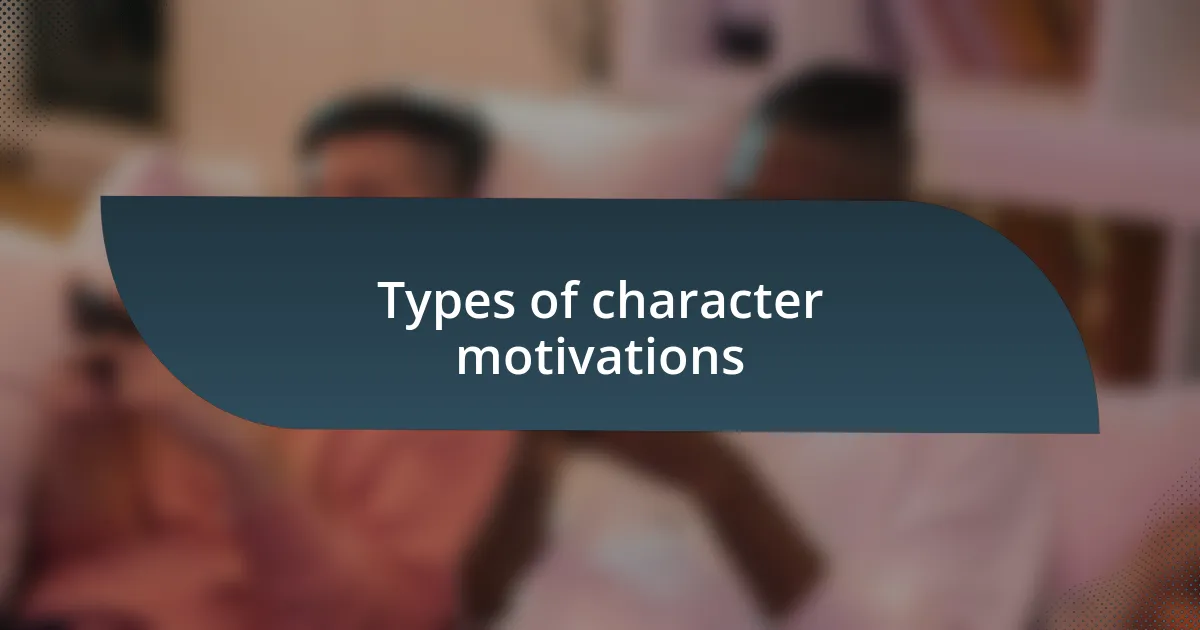
Types of character motivations
Understanding the types of character motivations can significantly enhance the depth of your storytelling. I’ve often noticed that motivations can generally be categorized into intrinsic and extrinsic forms. Intrinsic motivations come from within the character and often involve personal desires, beliefs, or the need for self-fulfillment. For instance, I wrote a character who pursued art not just to achieve fame but to explore their identity and inner struggles. This personal drive resonated with readers, drawing them into the character’s emotional journey. On the other hand, extrinsic motivations are influenced by external factors—like societal pressures or relationships. I once created a character who was driven by the desire for approval from their family, which led them into a tension-filled conflict with their own desires. This blend of motivations makes for compelling character arcs.
Here’s a quick breakdown of the types of character motivations:
- Intrinsic Motivation: Originates from personal desires, often tied to identity or self-fulfillment.
- Extrinsic Motivation: Influenced by external factors like social expectations, rewards, or relationships.
- Fear-based Motivation: Characters driven by fear often make desperate choices, propelling the story into darker paths.
- Love-driven Motivation: Pursuing relationships or love can lead to significant growth and transformation, often featuring as a central theme.
- Duty-driven Motivation: Characters influenced by a sense of obligation often face moral dilemmas that add layers to their arcs.
By exploring these motivations thoughtfully, I find characters become multi-dimensional, revealing profound layers that engage readers on multiple levels.

Techniques to reveal motivations
To effectively reveal character motivations, incorporating dialogue can be particularly revealing. The way characters interact with one another often unearths their desires and fears. I remember writing a scene where two friends talked about their dreams. Their conversation illuminated not just their aspirations, but also the insecurities that fueled them. This method truly allows readers to grasp the nuances of character intentions in a relatable way.
Another powerful technique is the use of inner monologue. By giving readers access to a character’s thoughts, I’ve found it artfully exposes conflicting motivations. For instance, I penned a protagonist who wrestled between following their heart and meeting societal expectations. As I crafted their internal debates, I realized that this transparency provided a raw, emotional connection for readers. Isn’t it fascinating how our thoughts can sometimes reveal more than our actions?
Moreover, showing character actions in contrast to their stated motivations can create compelling tension. I wrote a character who claimed to prioritize family yet made selfish choices that contradicted this. This dissonance intrigues readers, prompting them to question why the character is acting contrary to their declared values. Through these techniques, the motivations become vivid and engaging, inviting readers to explore the intricacies of human behavior.
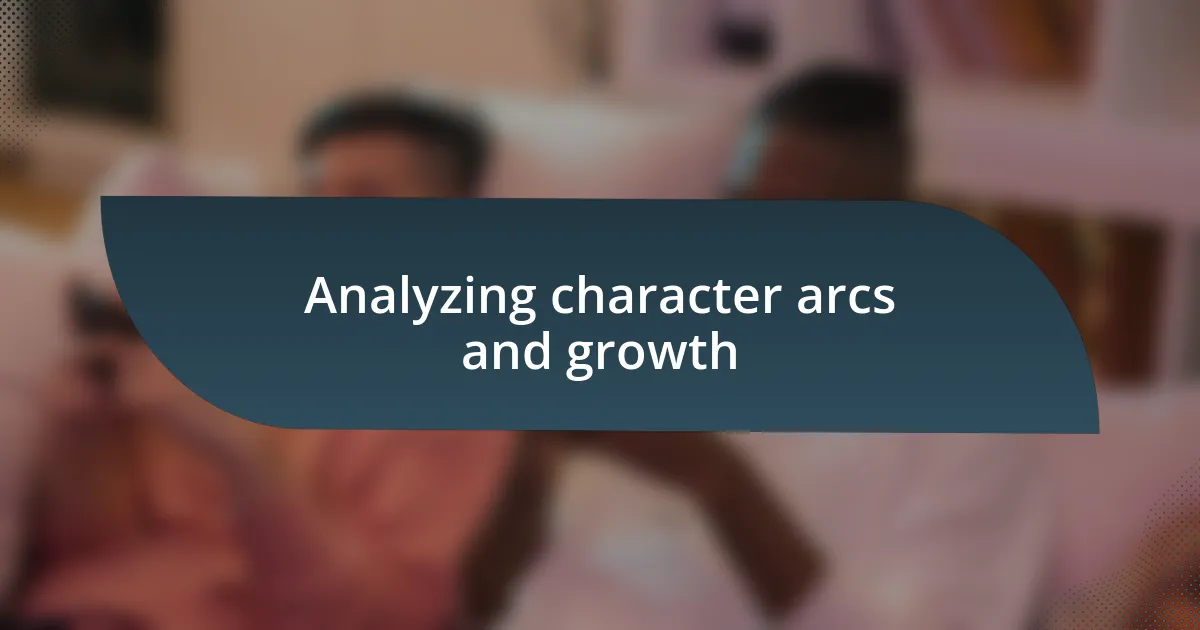
Analyzing character arcs and growth
Character arcs are all about transformation, and I often find myself fascinated by how inner journeys can reflect outward changes. When I created a character who starts off emotionally distant, I decided to weave in subtle moments where their vulnerabilities peek through—sharing a laugh, or a brief moment of support for a friend. Watching this character gradually open up was rewarding; it’s a testament to how people can evolve when faced with the right circumstances and relationships.
In my experience, growth isn’t always a straight line. I once wrote a character who experienced several setbacks, each testing their resolve. It was through these moments of struggle that I discovered the essence of resilience. Readers often resonate with this because we all face obstacles, and seeing a character stumble yet persevere can inspire hope. Have you ever felt that moment when a character’s misstep mirrors your own? It’s a powerful connection that reinforces the relatability of their journey.
Not every arc needs to end in triumph. I remember a character whose path led them to a darker realization about themselves. Their journey highlighted that self-discovery can sometimes uncover harsh truths. While their ending wasn’t triumphant, it sparked deep reflections for me as a writer. Isn’t it compelling how growth doesn’t always mean improvement? Embracing such complexity can enrich character development, creating a fuller, more realistic narrative.
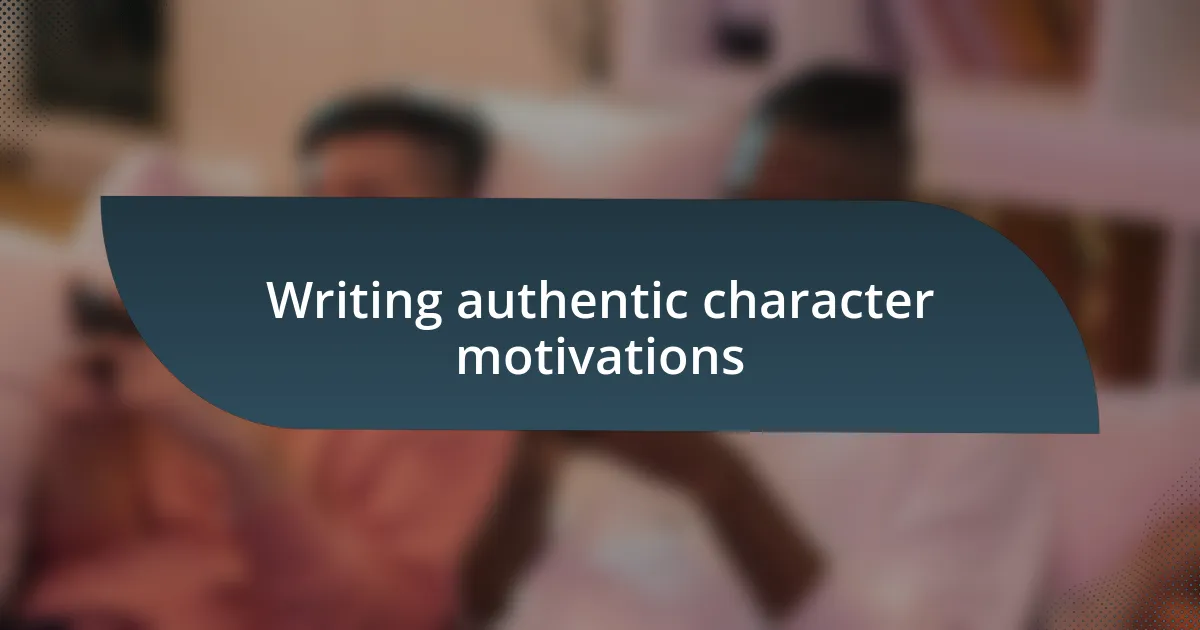
Writing authentic character motivations
Writing authentic character motivations requires deeply understanding your characters’ inner lives. When I crafted a character driven by revenge, it was essential for me to explore their past traumas and relationships. I found that by integrating specific events from their history—like the betrayal that fueled their desire for retribution—I could create a motivation that felt genuine and relatable. Have you ever sensed that a character’s decision stemmed from a hurtful experience? It’s those layers of complexity that can draw readers in.
In another instance, I developed a character who pursued success out of a desperate need for validation. This motivation resonated with me, as I’ve often chased achievements to prove my worth. By revealing their insecurities and how they compare themselves to others, I was able to depict their relentless pursuit authentically. There’s a certain vulnerability in sharing these motivations, isn’t there? It reminds readers that we all have our moments of doubt and the desire for approval.
Additionally, I’ve learned that motivations should evolve as characters face challenges. I once wrote about a character whose initial desire for wealth shifted to a realization of the importance of community. This transformation didn’t happen overnight; it stemmed from gradual experiences that forced them to reevaluate their priorities. Isn’t it fascinating how our motivations can change through life’s ups and downs? By embracing this evolution, I found that my characters became more multidimensional and their journeys, more compelling.











